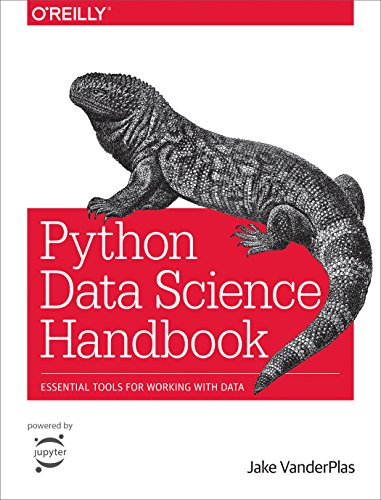Python Data Science Handbook: Essential Tools for Working with Data Link to heading
Summary Link to heading
The “Python Data Science Handbook” by Jake VanderPlas is a comprehensive guide that equips readers with essential tools and techniques for data science using the Python programming language. The book covers a range of topics crucial for data analysis, including IPython, NumPy, pandas, matplotlib, Scikit-Learn, and more. It is structured to be both a reference and a tutorial, providing practical insights and examples that demonstrate how to leverage these tools effectively. The author assumes readers have some familiarity with Python, but the book is crafted in a way to guide them from the basics to more complex tasks in data science.
Review Link to heading
The “Python Data Science Handbook” is widely acclaimed for its clear and concise presentation of complex topics, making it an invaluable resource for both beginners and seasoned practitioners in data science. Its real-world examples and exercises help solidify understanding by allowing readers to apply what they’ve learned. One notable strength of the book is its focus on practical application, making it easier for readers to apply the skills in real-world scenarios. However, some readers may find that it does not delve deeply into the theoretical aspects of data science, focusing more on implementation. Overall, it serves as an excellent resource for those looking to enhance their data manipulation and analysis capabilities using Python.
Key Takeaways Link to heading
- Practical Tools: Gain proficiency with essential Python libraries used in data science such as NumPy for numerical computing, pandas for data manipulation, and matplotlib for visualization.
- Data Preparation: Learn techniques for cleaning and preparing data, a crucial step before performing any analysis.
- Machine Learning: Understand the basics of machine learning with Scikit-Learn, including building and evaluating predictive models.
- Visualization: Develop skills in creating effective visualizations to communicate data insights clearly.
- Interactive Computing: Utilize IPython and Jupyter notebooks to create interactive data science workflows.
Recommendation Link to heading
The “Python Data Science Handbook” is highly recommended for aspiring data scientists, analysts, and programmers who want to enhance their understanding and competence in using Python for data analysis. It is particularly valuable for those who prefer a hands-on approach, as it provides numerous examples and exercises to practice with. While those looking for in-depth theoretical discussions may need supplementary material, this book is an excellent starting point for practical learning and application in data science projects.
